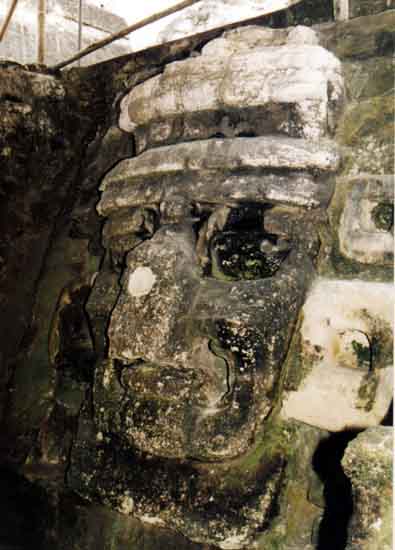The Maya City of Tikal (1999)
|
For centuries the
Maya city of Tikal was completely covered under jungle, one of dozens of
large cities scattered through present day Guatemala, Belize, El Salvador,
Honduras and Southern Mexico. The Maya civilisation collapsed fairly
rapidly around 1000 AD; it's thought that over-population or ongoing wars
between the cities hastened the end. It wasn't until around 1850
that this city was explored and became known to the wider world, partly
because of the difficulty of reaching its location in North-Eastern Guatemala.
When explorers did arrive, all that was visible was huge mounds such as
the one below, covered in undergrowth and large trees. Under the
vegetation, however, the ruins were still in good condition, with even
some wooden door lintels still well preserved. Excavation and well
thought out restoration work now gives a good balance between how the structures
looked when rediscovered and how they looked when the city was still inhabited.
|

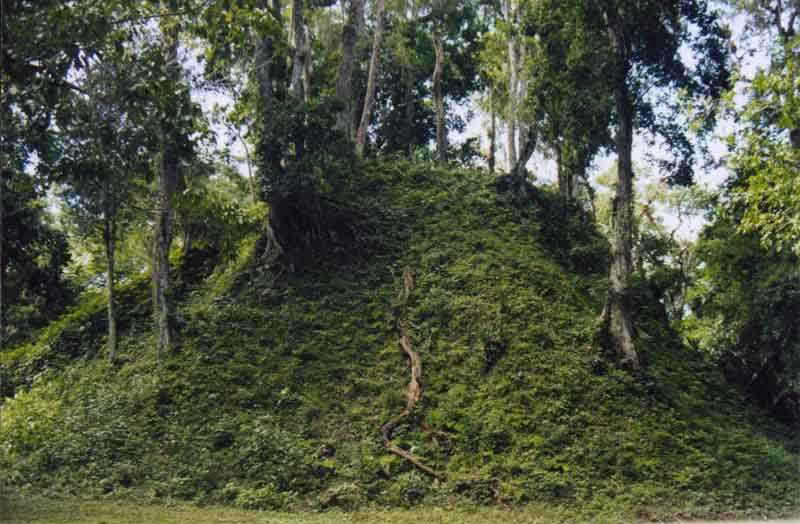 |

 |
|
circular sacrificial altar engulfed by a tree |
|
|
|
|
|
archaeological tunnel dug into the side of a temple
|
|
|
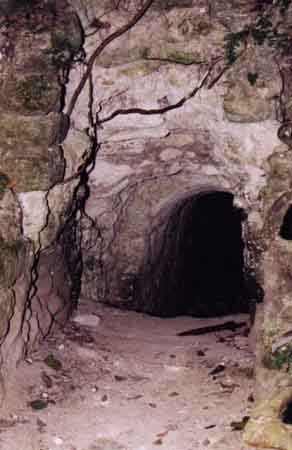 |

 |
After walking along
broad paths under the shady jungle canopy, past a number of low pyramids
and stone dwellings, visitors arrive at the Grand Plaza. Walking
out of the jungle into a large grassed area, the first view of the Temple
of the Grand Jaguar is enough to blow your socks off, even if it is a view
of the rear of the building.
The spectacular architecture
is even more impressive when you learn that the Maya never developed the
wheel as a tool. This is surprising, since they were remarkably skilled
in mathematics and astronomy. They understood the concept of zero
while Europeans were still painting themselves up and running around in
the mud, and the temples are all constructed precisely enough to be aligned
with all sorts of astronomical events, with accuracy to fractions of a
percent.
|

|
Impressive as it
is, the Temple of the Grand Jaguar, at 44 metres (143 feet) isn't even
the tallest temple at Tikal. Temple III, which is unexcavated, is
55 metres (179 feet), temple V is 58 metres (189 feet) and temple IV is
64 metres (208 feet). In case you have a strange feeling that you've
seen this temple somewhere before, maybe that's because these temples were
used near the very end of the first Star Wars movie as a rebel base!
Like the pyramids
in Egypt, these temples were built over the tomb of the kings of Tikal,
and precious burial goods were entombed with them. |
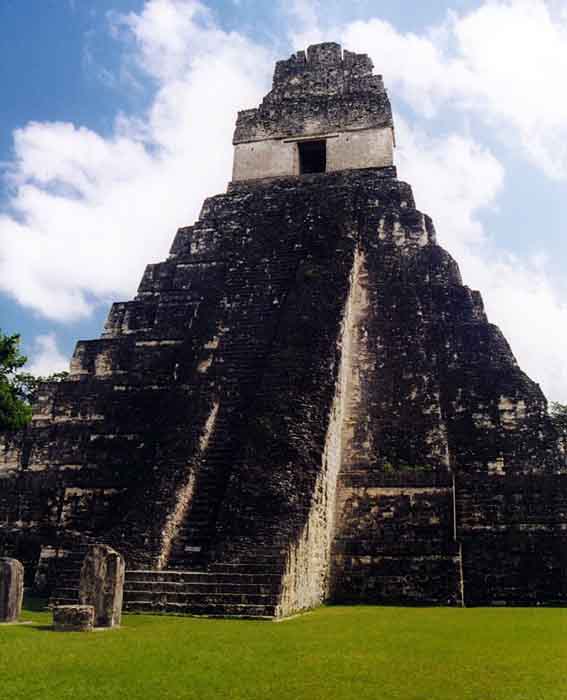 |

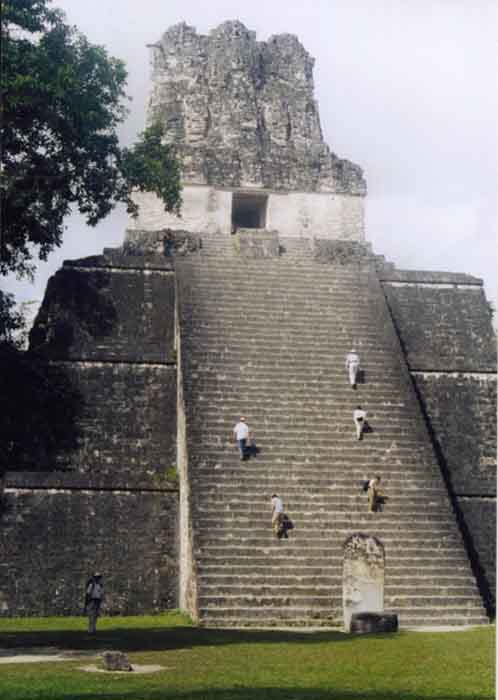 |
The Temple of the
Masks, more prosaically known as Temple II, is directly opposite the Temple
of the Grand Jaguar on the Grand Plaza. Many of the temples
at Tikal are arranged in pairs like this.
The steps up the
temple are uncomfortably large, but the rooms at the top under the giant
"roofcomb" are very small, because despite their mathematical prowess,
again the Maya didn't manage to come up with the idea of the arch, which
allows large enclosed spaces to be built from stone. Instead,
the rooms rely on very thick load-bearing walls to carry the fantastic
weight of the stones above them.
|

|
Side view of the
steps of the Temple of the Masks. The steps are much steeper and trickier
than they look, especially when looking down from the top! In this
photo, a woman in turqoise shorts is climbing slowly down backwards, holding
onto the steps with her hands, even though she's fairly near the bottom.
Sensible too - at least two people have died falling down the steps of
the temples.
|
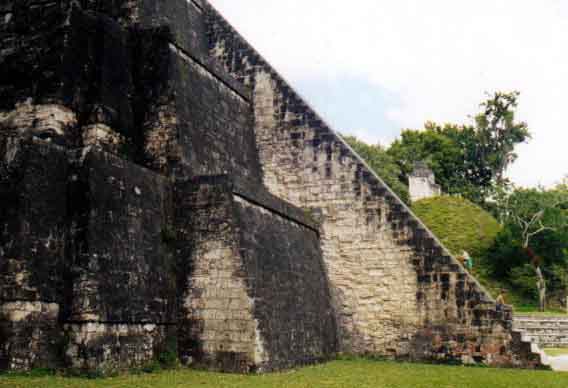 |

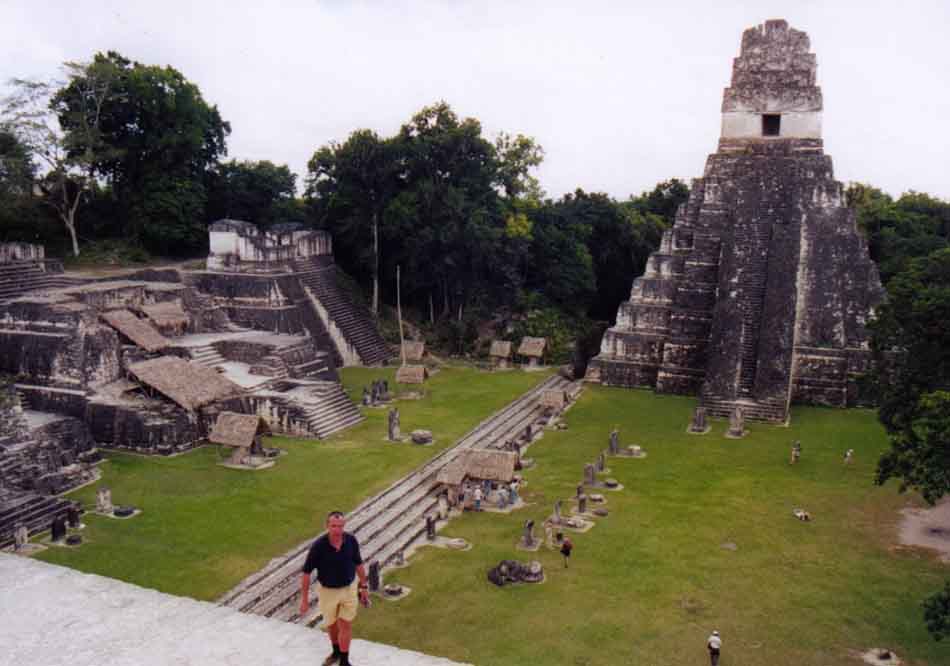 |
|
Temple of the Grand
Jaguar from the top of the Temple of the Masks, with the Grand Plaza in
between. The area on the left is the North Acropolis. The row
of standing stones to the right of the lowest set of stairs in the middle
of the picture are "stelae", with sacrificial altars alongside (see closeup
photo below). Additional stelae and altars are on the far left of
the picture, and at the base of the steps up the Temple of the Grand Jaguar.
|

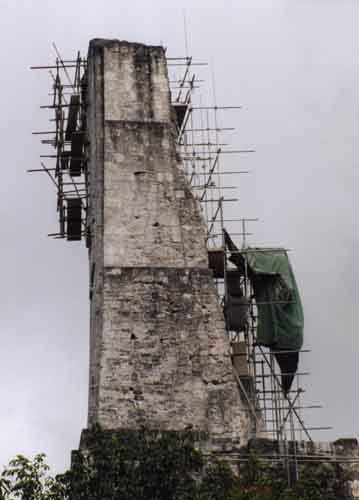 |
Temple roofcombs.
On the left is a roofcomb undergoing restoration, and on the right is the
roofcomb of the Temple of the Grand Jaguar. The horizontal indentation
above the door of this roofcomb originally held a carved wooden door lintel,
which was still in good condition when the nice folks from a Swiss museum
took it home with them, in 1877. |
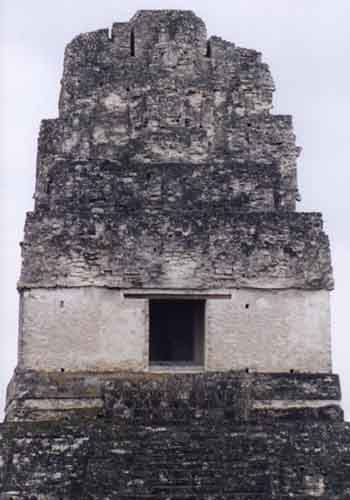 |

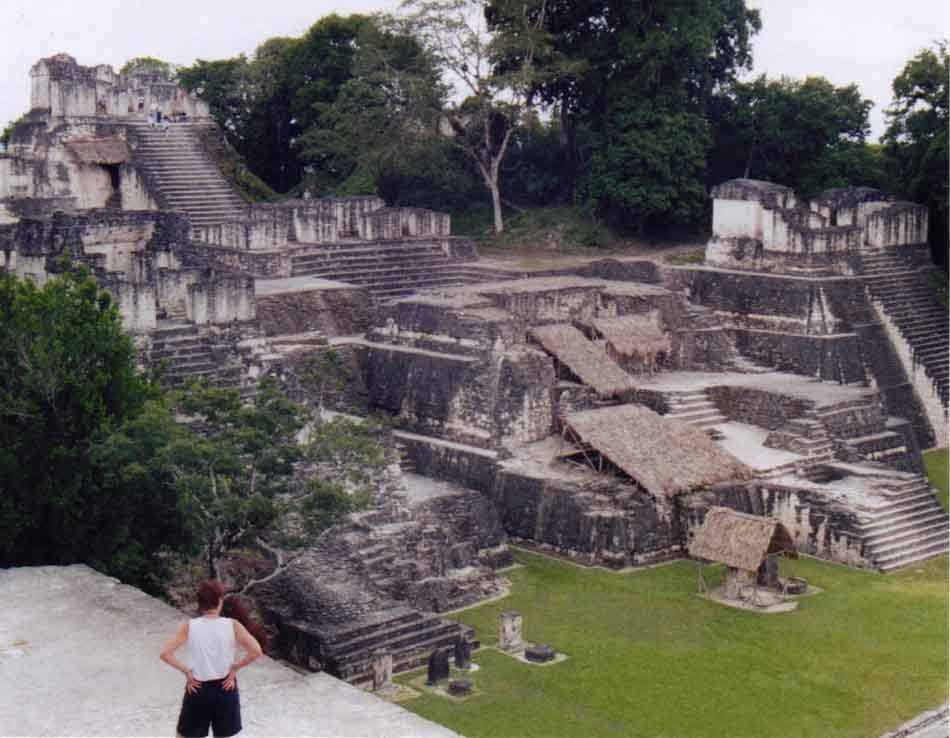 |

The North Acropolis from the top of the Temple of the Masks. Under the
largest of the straw roofs in the photo is a giant 10 foot high wall mask
of the rain god, shown on the right.
|
|
|
Closeup of the stela
under the A-frame grass roof in the North Acropolis photo immediately above.
The glyphs or characters written on these stelae recount battles and other
significant historical events during the reigns of the different Maya kings.
The glyphs have been translated, and the Maya calendar system has also
been discovered, which allows archaeologists to date the events of the
stelae to the exact day and year of the European calendar in which they
occurred, thanks to the remarkable precision with which the Maya plotted
time.
|
 |
|
|

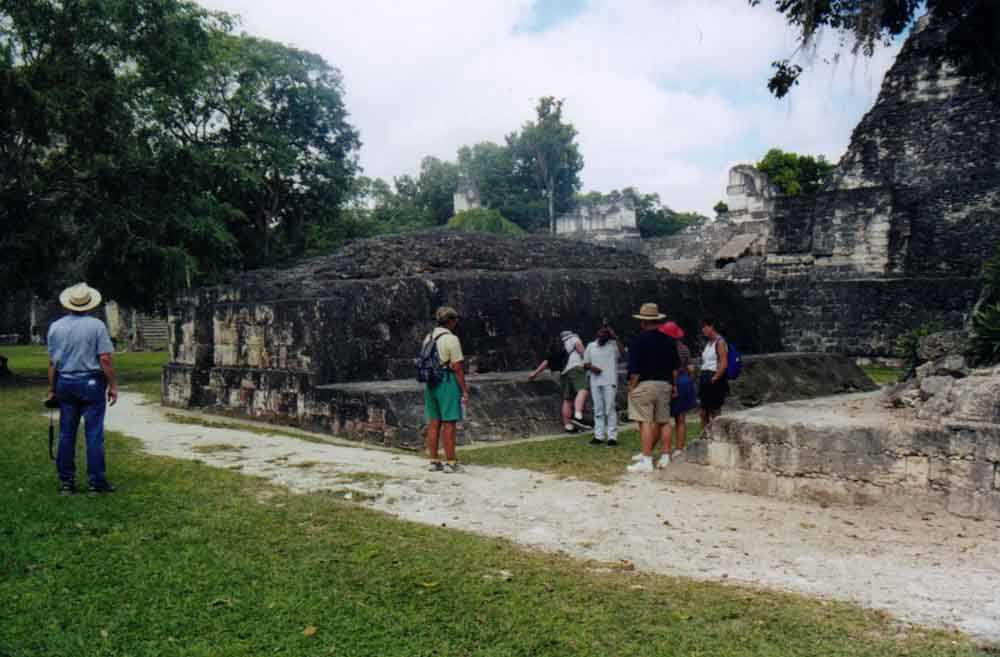 |

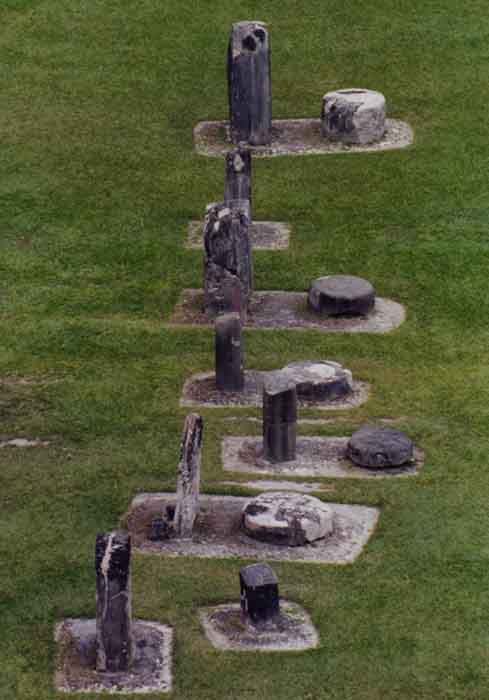 |
In the photo above,
the guy in the middle of this group, facing the camera, is our guide.
He spoke English with a strong Caribbean accent, which made me think that
he must have come from Belize, but in fact he originally lived on the East
Coast of Guatemala. He was very professional and articulate,
as was the Spanish speaking guide who took other members of our group.
My guide was also extremely tolerant towards yours truly as I constantly
lingered behind or wandered away to get yet another bird or insect photograph,
temporarily losing the party on a couple of occasions.
The structure inside
which everyone is standing is another Maya innovation, a ball court, this
one being on the edge of the Grand Plaza, with the Temple of the Grand
Jaguar on the right of this photo. The Maya used these courts
to play sports with rubber balls, and these games had strong religious
significance. The lucky winners of the games were tied up and
sacrificed on the round altars shown in the photograph on the left.
The Maya considered this lucky because anyone who was sacrificed was believed
to get a better afterlife. I suspect that for the average Maya
any sort of afterlife would be better than the life of hard work, heavy
construction and warfare which they endured.
|
If you enjoyed visiting Tikal then you might also enjoy visiting
Teotihuacan in Mexico.















